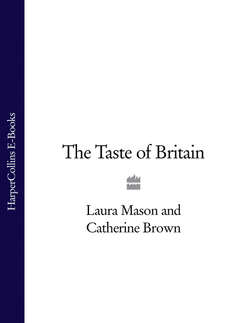Читать книгу The Taste of Britain - Hugh Fearnley-Whittingstall - Страница 231
HISTORY:
ОглавлениеSlipcote, or slipcoat, cheese has a long history in Britain. Originally, it appears to have been a full-fat cheese, and was widely known. The name may derive from the cheese breaking out of its rind as it ripened (Rance, 1982). Other British cheeses had this reputation, for instance the now-extinct Colwick. Law’s Grocer’s Manual (c. 1895) described slipcote as ‘a rich and soft kind of cheese made of milk warm from the cow, and often with cream added. It closely resembles white butter.’ It was a cheese type, rather than a regional description, though a Victorian writer linked it especially with Yorkshire, and apparently it was known in Rutland until the First World War and, Rance says, ‘remembered later as something like a Camembert, sold on straw, with a volatile coat’. Sir Kenelm Digby gave 3 recipes for slipcote from his Closet (1669), recalling that ‘My Lady of Middlesex makes excellent slippcoat Cheese of good morning milk, putting Cream to it.’ It was a soft, fresh cheese, usually wrapped in docks, nettles, grass or reeds.
Rationing discouraged the manufacture of such rich cheeses, but it is now made again, this time with sheep’s rather than cow’s milk.
